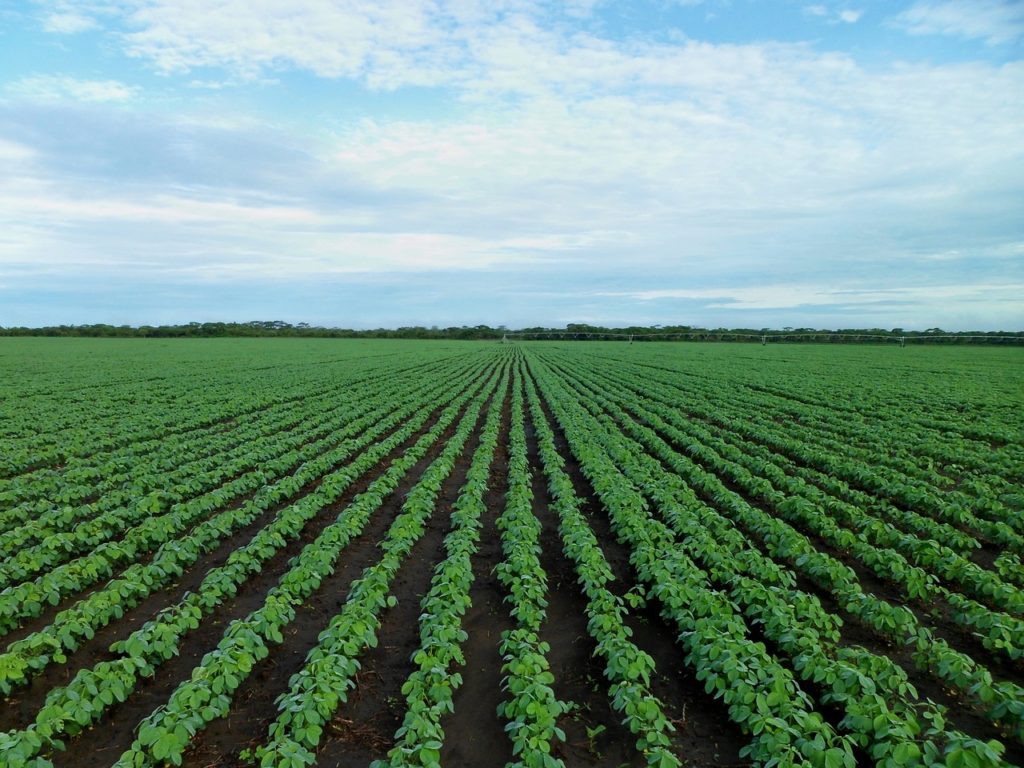If you missed Part I of this series, click here.
Whether you intend to plant Enlist Duo or XtendFlex cotton or soybeans or not, the issue of physical drift is important to all of us involved in agriculture. For producers who do elect to utilize these crop systems, it is critical to ensure that applications are made with the utmost care to avoid any drift or inadvertent application issues. For neighboring landowners who are not planting the new seeds, understanding their rights is also important.
For Both producers planting and not planting the Enlist or Xtendflex seeds:
First, all producers should be aware of the new “Flag the Technology” program. This is a field-marking program designed to prevent the misapplication of herbicides and to ensure applicators are aware of nearby sensitive crops. Essentially, producers should mark all fields with a colored flag. The different colors correspond with the specific trait technology planted in that field. Red flags, for example, signify conventional varieties with no herbicide technology traits and sensitive crops like grapes, vegetables, or organic fields. Black and white checks indicate a tolerance to dicamba and glyphosate. To read more and see all flag colors, click here. In addition to marking fields, a producer should ensure that anyone applying herbicides is educated on the various flag colors and takes care to notice flags in an area before beginning application.
Second, producers should also be aware of the “Texas Crop Registry” which is currently being converted into a mobile app called “Hit the Target.” The Hit the Target app, which will be available April 15, allows producers to enter the exact locations and boundaries of certain crops and then identify specific pesticide tolerances through using the Flag the Technology colors. Then, before an applicator enters a field, he or she can pull up the location on the Hit the Target app and see a map of the surrounding area that shows various traits and crops nearby.
Third, there are few problems that cannot be lessened, or even solved, over a cup of coffee. Producers should know their neighbors and try and work with them to avoid issues. If a farmer owns a cotton field that is surrounded by sensitive crops such as grapes or tomatoes on all sides, he may need to carefully consider whether he wants to utilize these new cropping systems. If a farmer is growing grapes in the middle of cotton country, he may want to visit with his neighboring landowners to see what precautions they might be able to implement.
For producers planning on using Enlist or XtendFlex seeds:
First and foremost, producers planning on using either of these crop systems must take time to carefully review the herbicide label. There are numerous instructions within each of the labels dealing with a variety of considerations from how large of a buffer should exist around fields to which size nozzles should be used, to what appropriate wind speeds are, to the adequate boom height. Understanding the label requirements and carefully following them is critical. {Here, here, and here are a couple of articles discussing the dicamba label. Articles related to the Enlist Duo label can be found here and here.
Second, producers may want to consider taking additional precautions above and beyond those required by the label. For example, while the Enlist label requires a 30′ downwind buffer, it may be much safer to have a 100′ downwind buffer to ensure crop damage does not occur.
Third, anyone mixing Enlist Duo, Xtendimax, or Engenia in their tank must be careful to follow tank wash-out procedures to avoid inadvertent damage to other crops.
For producers not planning on planting the Enlist or XtendFlex seeds:
First, the favorite rule of all attorneys should be followed: document, document, document. In the event that drift damage does occur, a farmer will want to have the best evidence possible in order to take action. This means anything from photographs to plant pathology test results to wind speed data to other documents. The more information that a producer has, the better.
Second, producers need to understand their options if drift does occur. The best first step often might be to contact the neighbors and see if something can be worked out without involving other folks like attorneys or the Texas Department of Agriculture. If a producer decides to make a report of the incident, that is done through the TDA. Once a report is filed, the TDA will come and investigate the damage and the records and information of surrounding producers who potentially caused the harm. Importantly, although the TDA may impose fines on an offending applicator, they do not have the power or ability to obtain monetary compensation for a damaged landowner. The regulatory fines imposed by the TDA are paid to the agency, not the damaged farmer. If a farmer wishes to seek monetary compensation and damages, he or she must consider a civil lawsuit against the applicator who caused the damage. [For more on the potential legal claims, click here.]
Third, producers need to ensure that their own pesticide application records are in order prior to contacting the TDA or an attorney, as it is usually their own records that are first analyzed and not those of the neighboring landowners.












